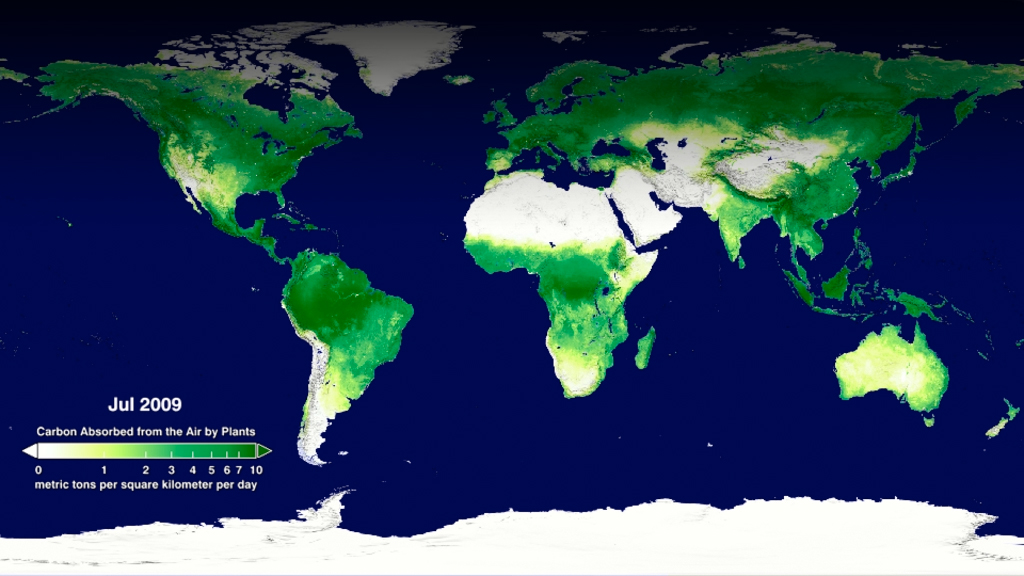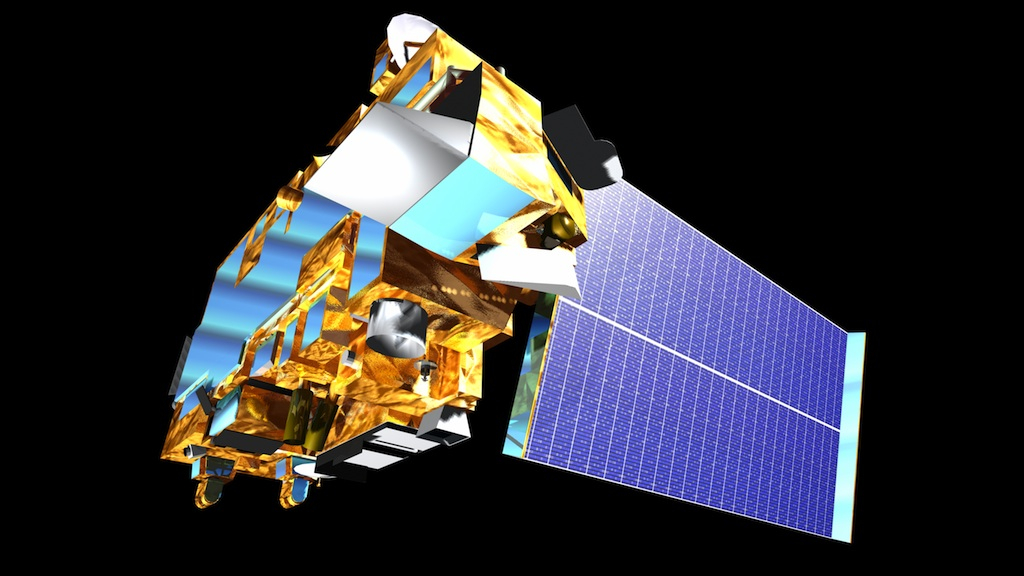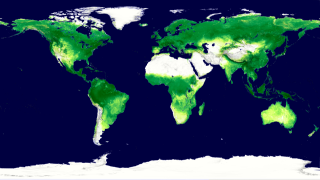Earth
ID: 3842

Through tiny, microscopic pores called stomata, plants absorb one hundred billion tons of carbon from the air each year and convert about half of that into organic matter—leaves, roots, tree branches, grass. As we continue to increase the level of carbon dioxide in the atmosphere, knowing exactly how much carbon Earth's plants absorb from the air—Gross Primary Productivity (GPP)—will become only more important. NASA has closely measured this since 2000, and that volume of absorption is seen in the first visualization below as waves of green. The northern hemisphere all the way up to the Arctic Circle swells with life each summer, before much of the vegetation wilts and exhales its carbon in fall and winter. Meanwhile, forests such as the Amazon, a robust green throughout, show off their amazing productivity despite seasonal changes.

Carbon Catch And Release


Related Story
Story Credits
Lead Visualizer/Animator:
Horace Mitchell (NASA/GSFC)
Producer:
Michelle Williams (UMBC)
Lead Scientists:
Maosheng Zhao (University of Montana)
Steven W Running (University of Montana)
Lead Writers:
Adam P Voiland (Wyle Information Systems)
Patrick Lynch (Wyle Information Systems)
Kayvon Sharghi (USRA)
Horace Mitchell (NASA/GSFC)
Producer:
Michelle Williams (UMBC)
Lead Scientists:
Maosheng Zhao (University of Montana)
Steven W Running (University of Montana)
Lead Writers:
Adam P Voiland (Wyle Information Systems)
Patrick Lynch (Wyle Information Systems)
Kayvon Sharghi (USRA)
Please give credit for this item to:
NASA's Goddard Space Flight Center Scientific Visualization Studio
NASA's Goddard Space Flight Center Scientific Visualization Studio
Short URL to share this page:
https://svs.gsfc.nasa.gov/3842
Keywords:
SVS >> App
NASA Science >> Earth
https://svs.gsfc.nasa.gov/3842
Keywords:
SVS >> App
NASA Science >> Earth








